Dublin got Joyce riffing, California was Didion’s tireless muse, and it may well have been Sicily that prompted Carl Jung to write that ‘a man without myth is a man without roots’ for it’s a place with no shortage of either.
Poised at the toe of Italy’s boot, Sicily is separated from the mainland by much more than just geography. A lifetime at the crossroads of power has fashioned this sun-baked Trinacria into a web of soul-stirring contradictions: Italian, though more Greek than Roman; uniquely open-minded but tied to tradition; and wholeheartedly committed to life’s slower rhythms (unless, of course, you find yourself behind the wheel of a car).
Which is exactly where Mr Smith and I find ourselves, Carpe Diem-ed to the nines as we set our sights on Sicily’s eastern sweep. Turns out, there’s no better time for it, either. As the White Lotus crowd descends upon Catania’s departure lounge, the island’s autumnal charm shifts into fifth gear with open roads, empty beaches and a serotinal showcase of crimson and carmine.
ORTIGIA
LÙME
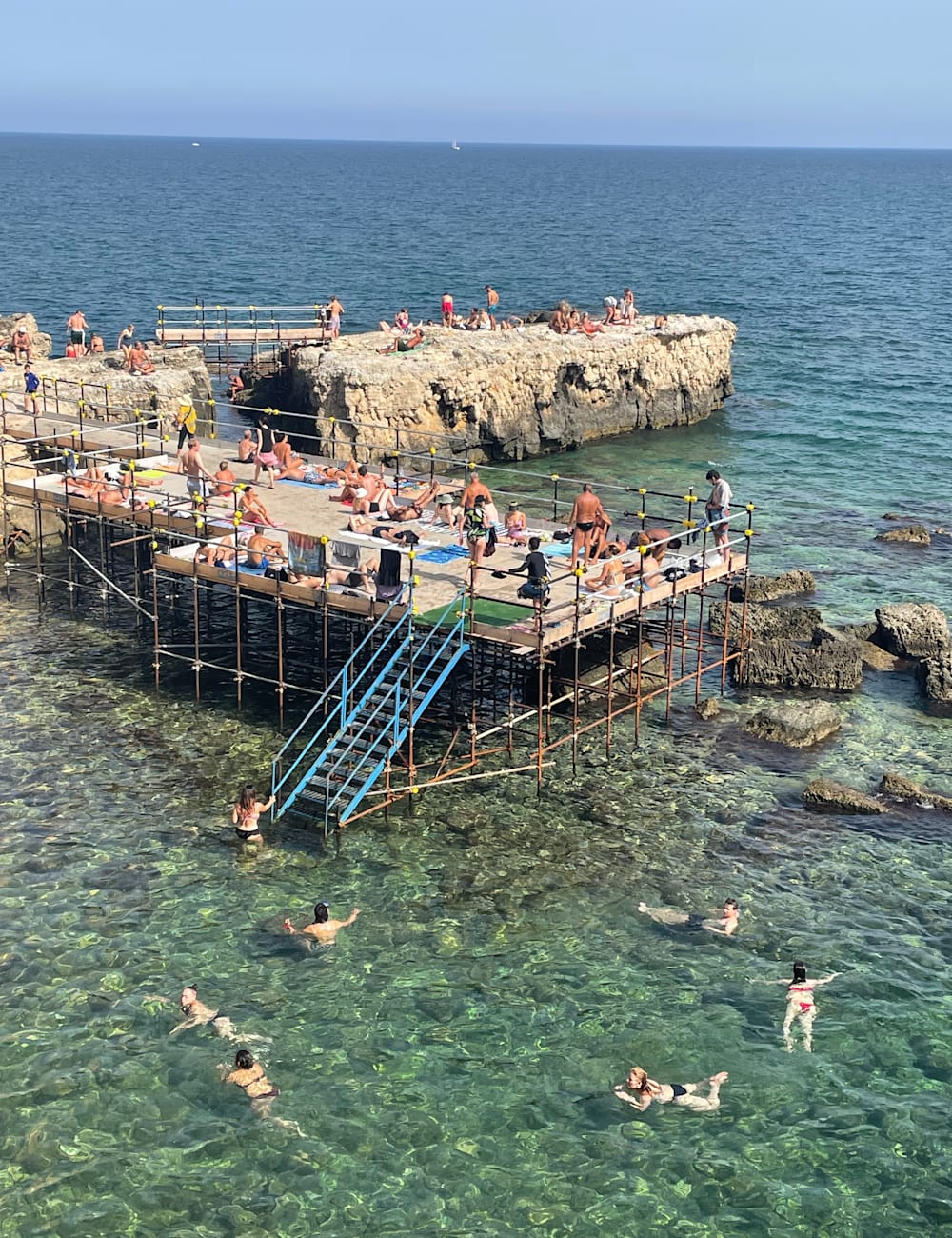
Our own Grand Tour starts in Syracuse, a place praised by Cicero as the greatest – and most beautiful – Greek city of them all. More specifically, we start in Ortigia, the city’s historical centre which occupies a small island tethered to modern Syracuse by bridge. This 3,000-year-old settlement is Sicily’s oldest, and once surpassed Athens as an ancient centre of trade, knowledge and the arts.
Just steps away from the sea, Lùme is the passion project a dynamic quartet; jet-setting Parisian, Prune, and her cousin Hanawa, coffee-connoisseur Ronan, and their dinky dog Nano, whose enthusiasm for his second home is just palpable as the grown-ups.
The mood is one of warmth. Soft lighting illuminates oyster-toned stucco and lovingly-restored stone arches. Entering, we stop to swoon over the hallway’s Pascal Monteil tapestry whose colours are complemented by an autumnal bouquet, the first of many keen-eyed pairings.
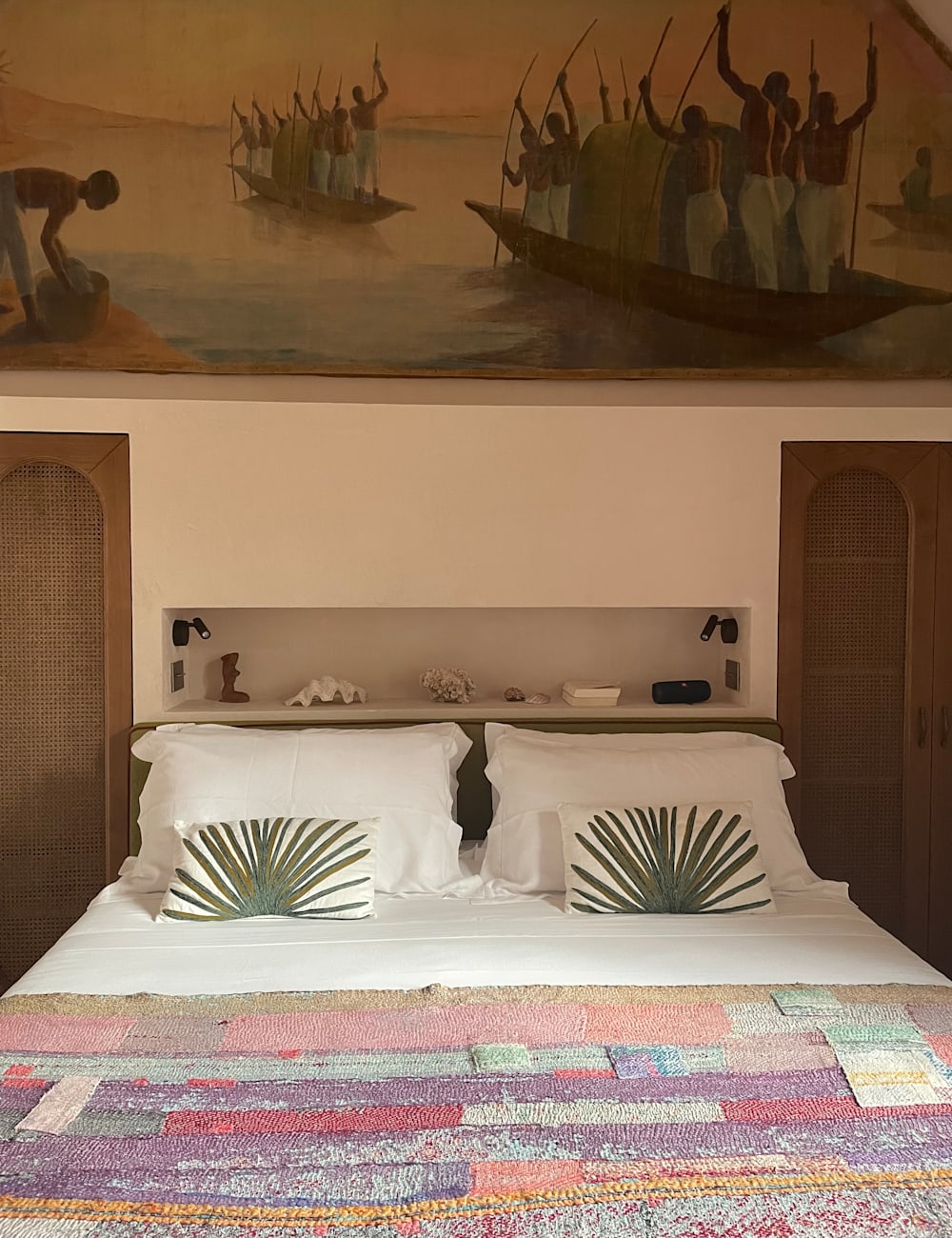
Rooms are arranged around a central courtyard and reflect Prune’s travels as they trot merrily around the globe marrying playful Sicilian signifiers with Indian textiles and African objects d’arte. La Quinta, our home for the night, also features a greenhouse filled with cacti and leafy palms, a patchwork of patterned floor tiles, and a private terrace that gazes over terracotta rooftops. But it’s the convivial feeling of a family home that truly sets Lùme apart.
Perfect for Design-lovers, mythology buffs, and those after an off-season splash.
Wine and dine Head to Moon for inventive vegan dishes inspired by Sicily and North Africa, or Enoteca Solaria for their impressive selection of biodynamic wines.
Worth getting out of bed for Don’t miss Fontana Arestua, the water-nymph turned freshwater-spring that inspired Milton, Pope and Wordsworth alike. Those with a more modern eye should make a beeline for Santuario Madonna delle Lacrime, an uncharacteristically brutalist church designed to evoke a gigantic teardrop.
NOTO
SEVEN ROOMS VILLADORATA
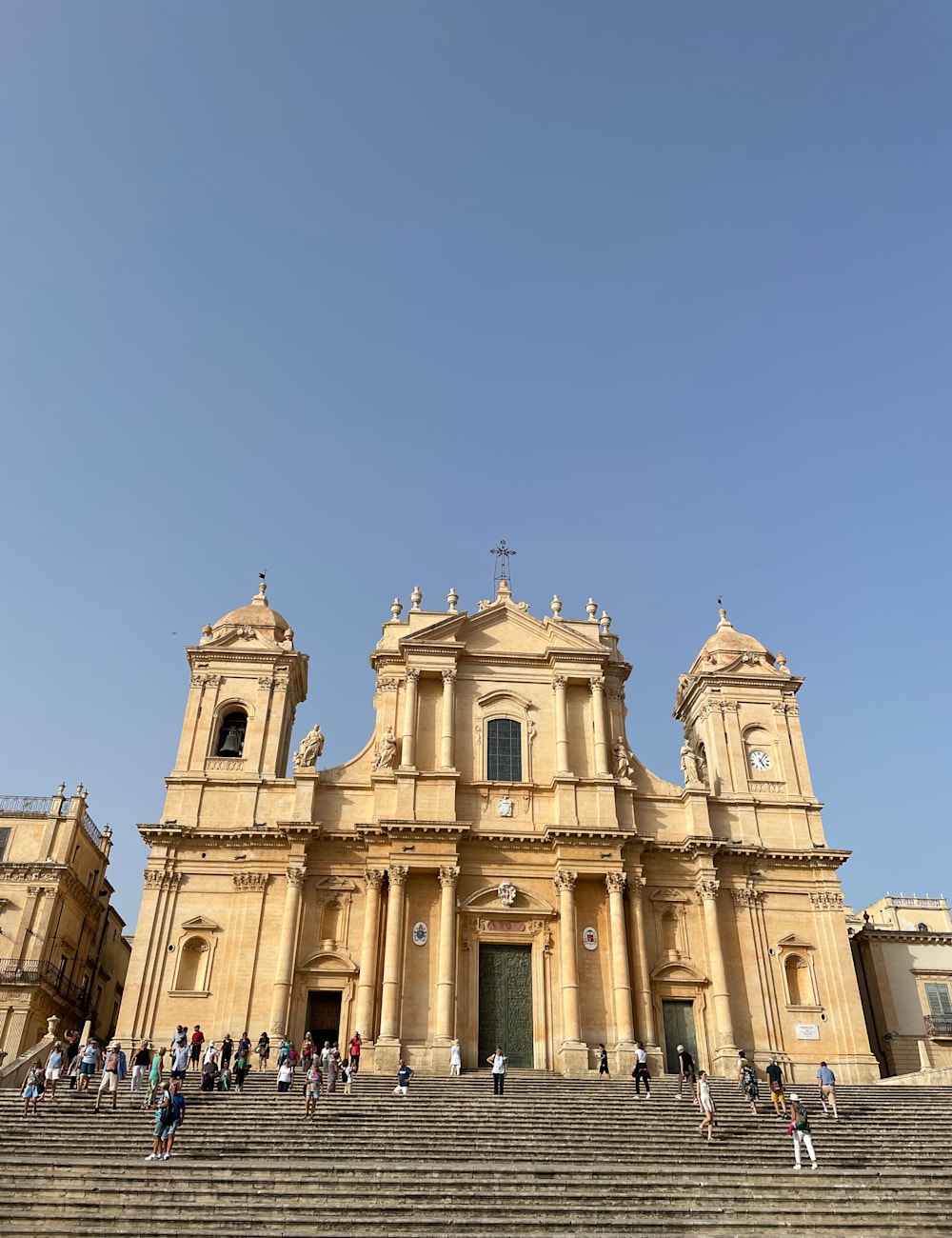
Che drama! I remark as we approach Noto’s historic golden-hued centre, though I’m far from the first to notice its cinematic appeal. The city’s main stretch is an index of Noto’s on-screen appearances, with vintage film posters marking honourable locations. You’ll find L’Avventura, for example, opposite the steps of Chiesa di San Francesco d’Assisi all’Immacolata, where a perfectly-coiffed Monica Vitti waited for Sandro. But as we are about to discover, it’s not just Hollywood royalty who have left their mark here.
Set in the former residence of Prince Nicolaci, the historic palazzo Seven Rooms Villadorata calls home dates back to the 16th-century, and despite being the city’s largest, we manage to drive right past it. Second time’s a charm, and as we ring the bell, the palace’s inconspicuous double doors swing open to reveal an enormous cobbled courtyard. It’s clear from the off that much like Noto itself, Seven Rooms is a classic. With our bags whisked upstairs, we’re greeted by director Giovanni, who dazzles with his encyclopaedic knowledge of the city, detailing its fabled past with each circle of the map.

Dinner reservations? Sorted. And as for breakfast, each morning we wake like giddy children on Christmas day, leave the bedroom of our palatial suite and marvel at how we didn’t hear a sound. ‘Santa’s been!’ Mr Smith announces as we survey the spread of eggs and cheeses, sugar-dusted pastries and fresh coffee awaiting us in our separate lounge. Sicilians may be masters of hospitality, but Seven Rooms are wizards.
And, with all that taken care of, there’s more time to spend slurping roasted almond granita in the iconic Café Sicilia, listening to church bells wage a Wagnerian chorus, or convincing Mr Smith that we needn’t return to London at all.
Perfect for Drama Kings and Queens with palatial sensibilities, silver screen stans and italophiles seeking Disney-esque levels of dolce vita.
Wine and dine Viva Il Bistro is the place to be for stylish cocktails and a modern menu of Sicilian favourites. Otherwise, opt for the tasting menu at the hotel’s sister property, Country House Villadorata, 15 minutes outside of the city.
Worth getting out of bed for Fans of interior design will love Palazzo Castelluccio, an 18th-century palace masterfully restored to its former glory. Follow it up with a spot of retail therapy at Venerabili Ragazze.
MODICA
CASA TALIA
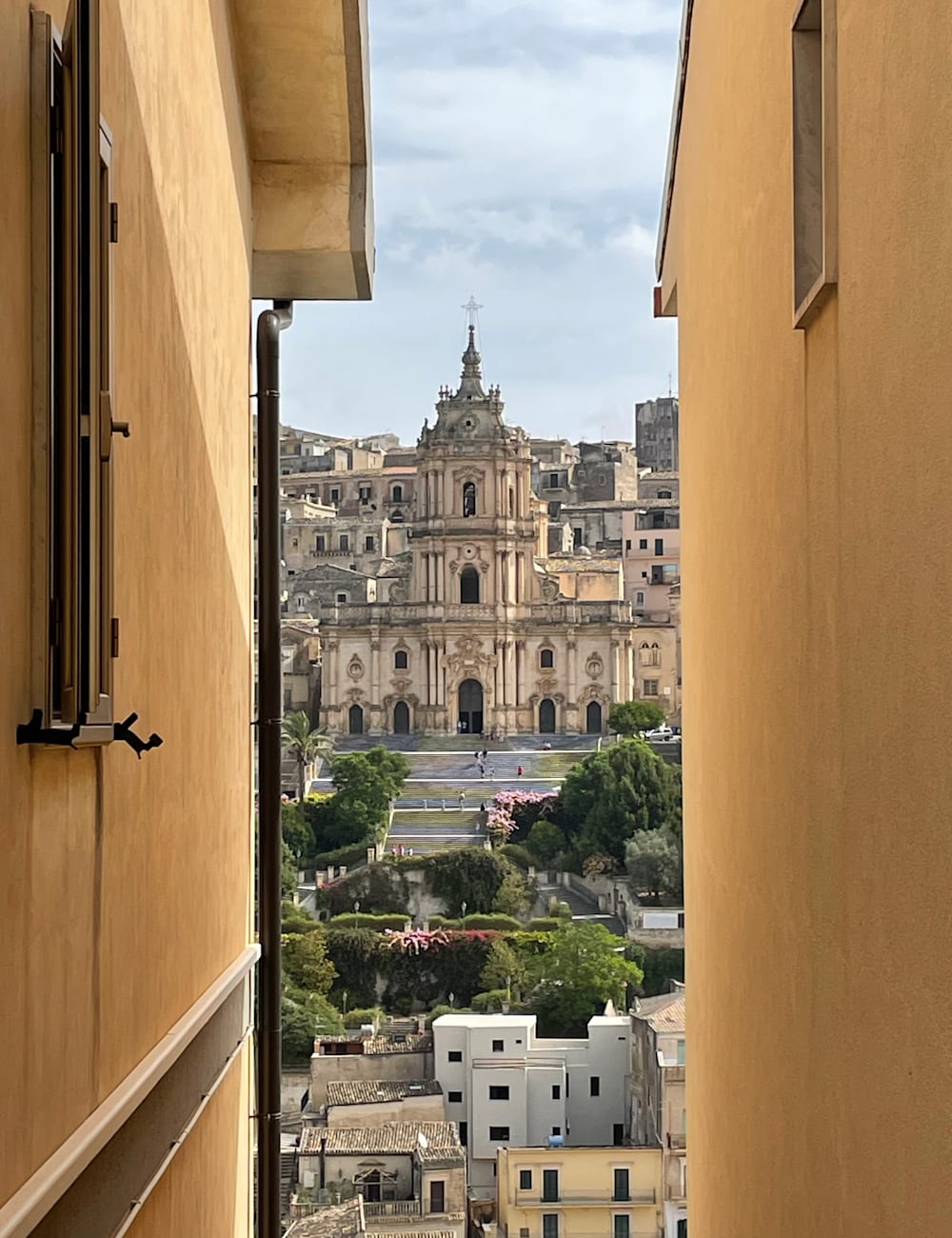
The poet Gesualdo Bufalino described Modica as a split pomegranate with one half condensed on a rocky spur and the other spread at its feet. It’s a romantic vision, but then Hercules, the city’s alleged founder, was a pretty romantic guy. Legend has it that he named the hilltop town after a beautiful Greek woman, Motia, who helped him recover the red oxen he’d wrestled from a three-bodied giant. If that sounds like a stretch, all I can tell you is that there are some things that must be seen to be believed, and Modica is one of them.
The city is built around a junction of steep valleys and consists of an upper and lower part. As we survey it from the garden of Casa Talia, rising up from the ground in all its baroque splendour, it seems like a toy town, an unbelievable feat, with one building stacked on another until they brush the clouds.
In contrast to more conventional stays, the limits of Talia are not clearly defined. Instead, its architecture blends into the urban fabric of the city, with rooms scattered across a cluster of small, intimate streets, loosely arranged – not unlike a riad – around a central garden. The result is that of a close-knit village. We feel immediately like locals as we come and go throughout the day and retire to the garden by night as if it were our own.
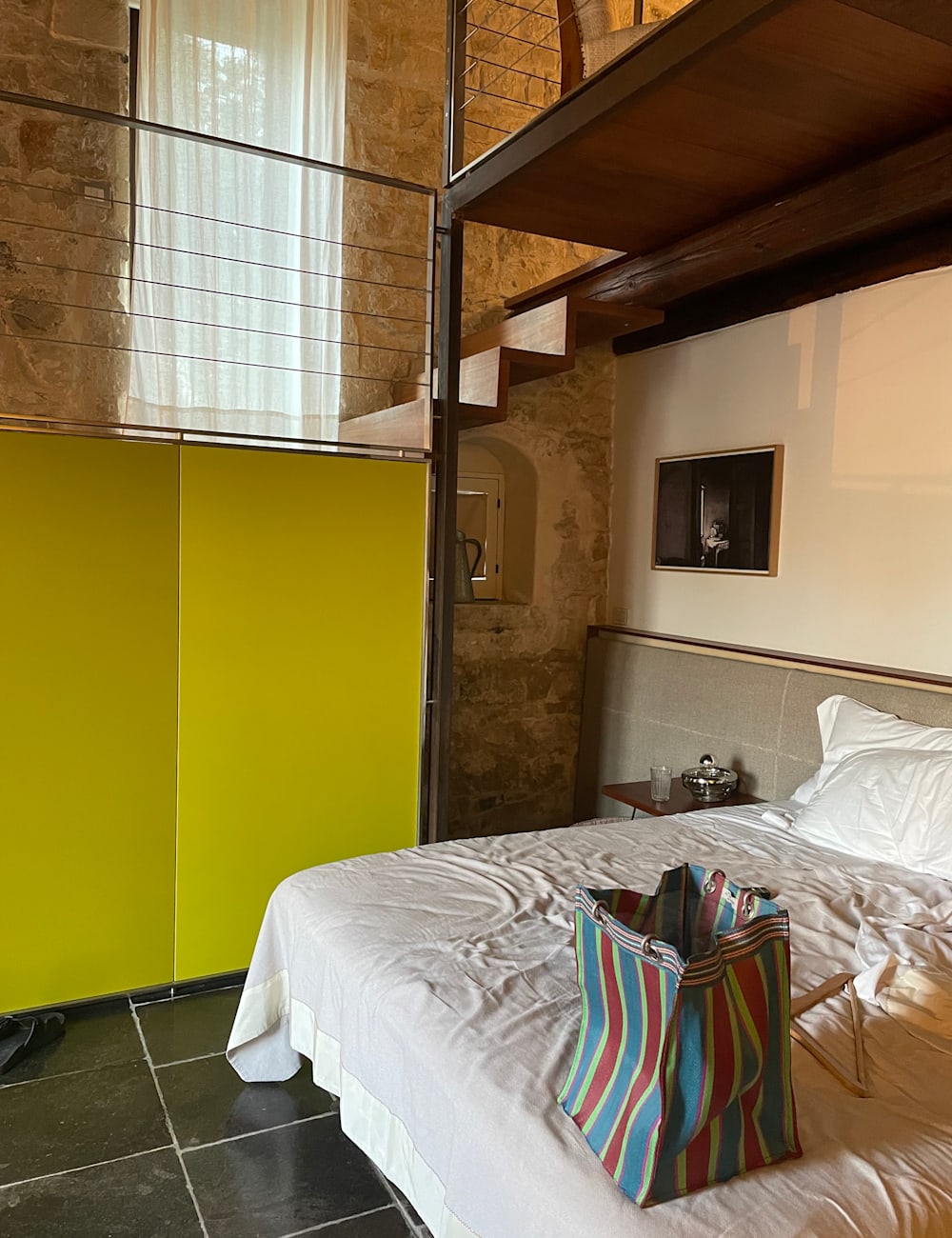
As we sit down to breakfast in a secret, second garden overlooking the city, pomegranates dangle from the tree above our head, ripened and blushing. In Kate Lebo’s The Book of Difficult Fruit, she writes of how cracking open a pomegranate feels like lifting the lid on a jewellery box. And if the city were a jewellery box, you could think of Casa Talia as the ballerina in the middle, gracefully twirling to its own unhurried hum.
Perfect for Dreamers, poets, star-crossed lovers and those with ample lower body strength for tackling the many stairs.
Wine and dine Rappa Enoteca does a killer charcuterie and enough Sicilian wine to keep you going for hours, while Ragusa’s Ciacio Ibla makes a fine spot for lunch.
Worth getting out of bed for See how the city’s sweet stuff is made at Antica Dolceria Bonajuto, the island’s oldest chocolate factory, visit Nobel prize winner Salvatore Quasimodo’s former home, or, on the last Sunday of each month, browse the wares at Mercatino delle Pulci.
ETNA
ZASH COUNTRY BOUTIQUE HOTEL

The great thing about road-tripping Sicily’s east coast is that it never gets boring. The mercurial landscape transforms every few miles, and because the island is so compact, you’re never behind the wheel long enough to tire of it.
The journey north to Etna’s foothills takes us just under two hours, but the difference is stark. The climate is cooler, crisp, and big Mama herself looms large in the distance, snow grazing her crown. But not even the rowdiest of Etna’s rumbles could spoil the peace at Zash Country Boutique Hotel. In fact, aside from the trickling of water and chirping of birds, the ‘zash’ sound made by rustling trees is the only thing breaking total silence.
Once a summer retreat for Catania’s nobility, the main house, an Italianate villa of the Maugeri wine-dynasty, is swaddled by acres of citrus groves – the when-life-give-you-lemons memo has been well received here, and we’re greeted by a zesty, home-pressed lemonade in the restaurant, where a towering corkscrew press hints at its past life. Our room is decidedly more contemporary, though, hidden among those citrus-scented glades and steeped in Japanese minimalism.
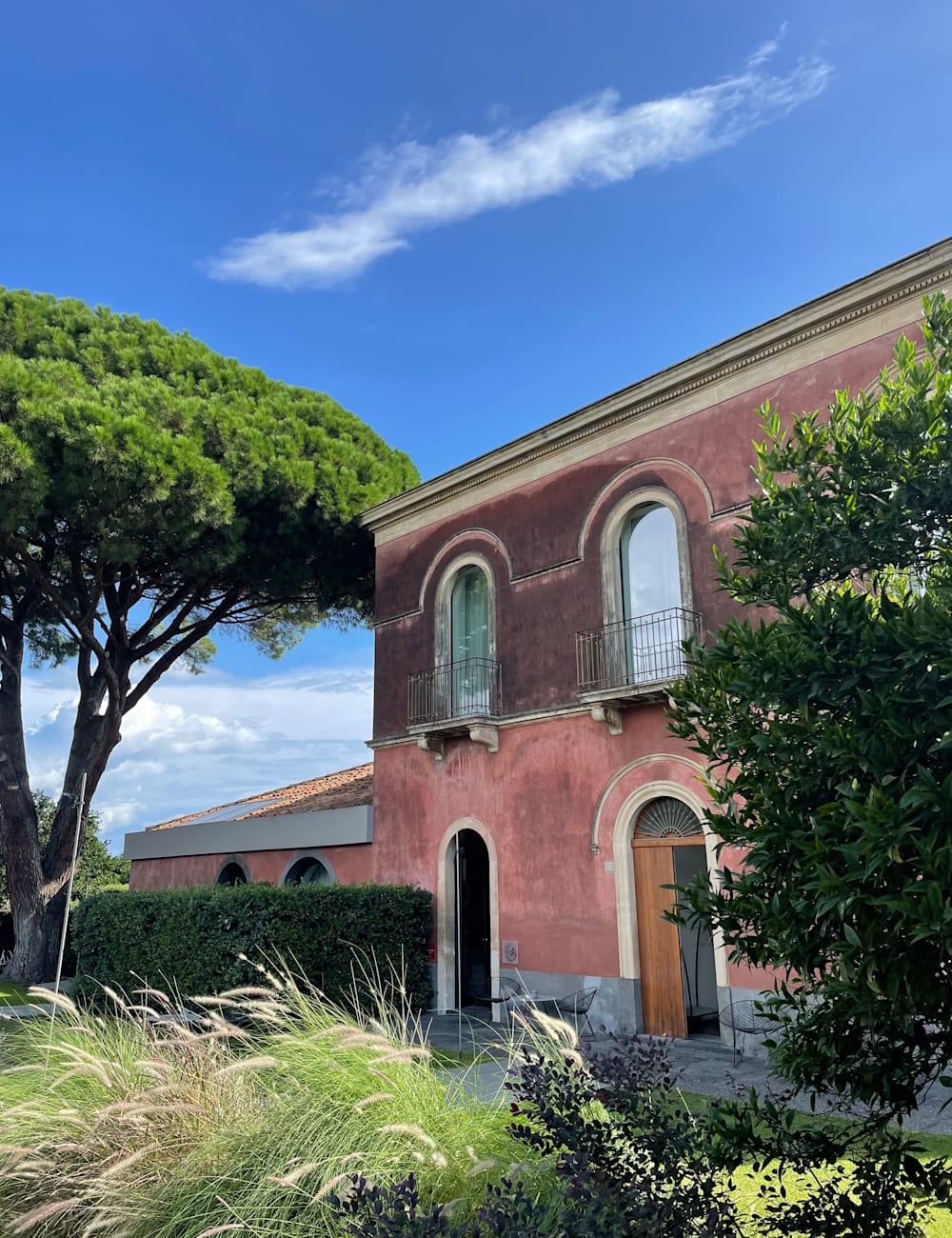
In Sicilian language, there is no future tense, and when locals speak of the past, they often speak of a deep past, employing the passato remoto, a tense reserved for the really long ago. Not out of some crude sense of nostalgia, mind, it’s just that Sicily operates on its own time, where past and future are always present. Zash Country is an initiation. And with that, we head inland, closing in on Etna’s cradle.
Perfect for Rest and relaxation with a pinch of pizazz.
Wine and dine Raciti’s sophisticated Sicilian cuisine is difficult to tire of. But if you do fancy switching things up, Vico Astemio in neighbouring Riposto is an excellent option.
Worth getting out of bed for If you must move, borrow a bike (free for guests) and take a ride through the citrus groves. Alternatively, have the hotel arrange a trip to nearby Taormina, but be wary of charming men offering lavish boat trips to Palermo…
ETNA
MONACI DELLE TERRE NERE
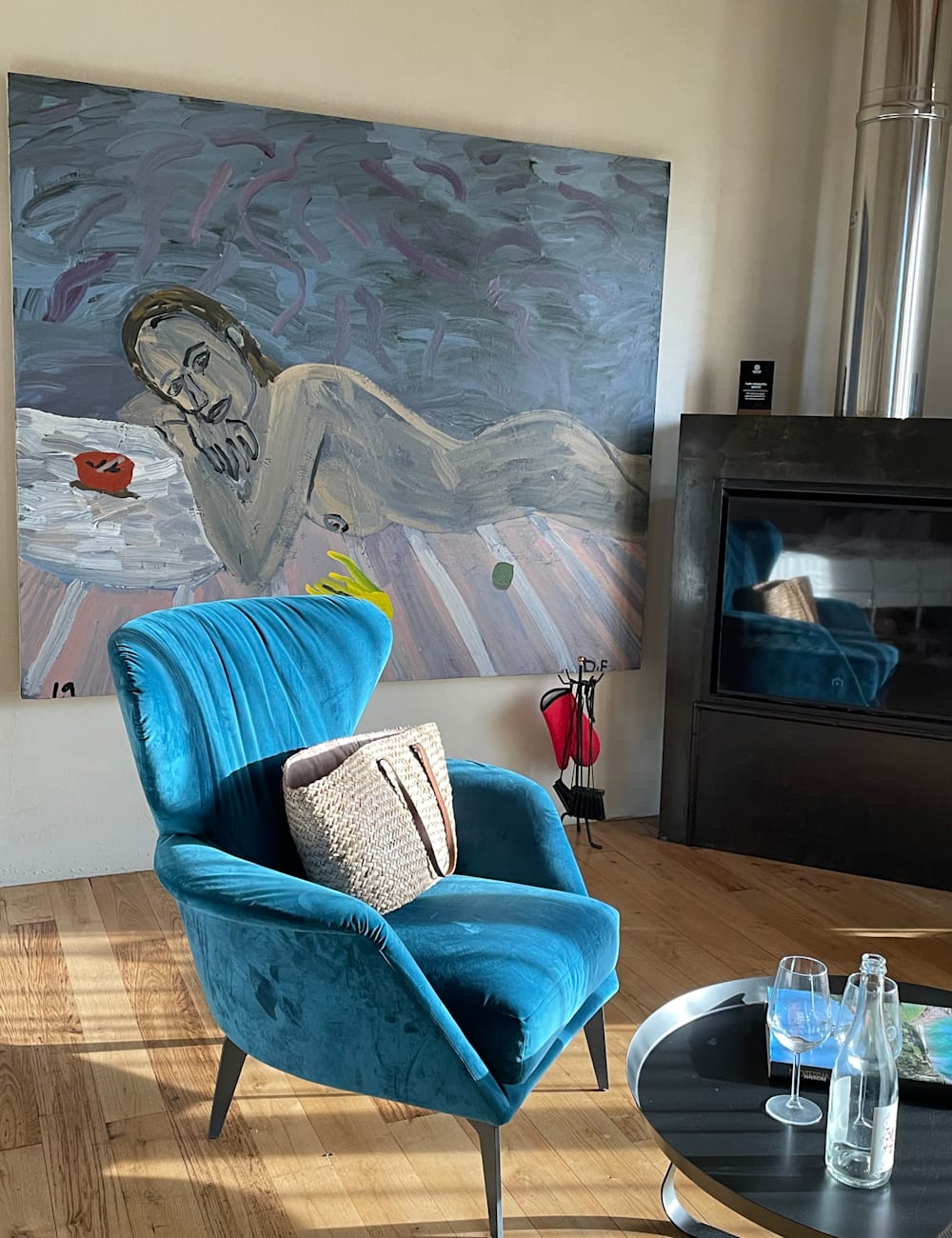
Etna has a maternal presence for Sicilians, despite her capacity to destroy. Pasolini shot here again and again, drawn to Etna for precisely this dualism; the sacred and profane, beauty and danger, fertility and ruin.
Though Mama’s been rather merciful to Monaci Delle Terre Nere, a former Augustinian monastery turned 26-hectare eco-estate and vineyard. Its name refers to the mineral-rich black earth of the region, a result of fallen lava fragments which gives the wines made here their singular profile.
Today, the focus is on quality. Great care is taken cultivating vines which spring out of lava-rich soil across rows of dry stone terraces. That includes a collaboration with Catania University to conserve rare ‘relic’ grape varieties. And despite being a luxury resort, a sense of wilderness remains here. On the outside at least. Inside, elegant antiques and handsome stone walls are paired with curvy Arne Jacobsen chairs and Frieze-worthy contemporary painting.
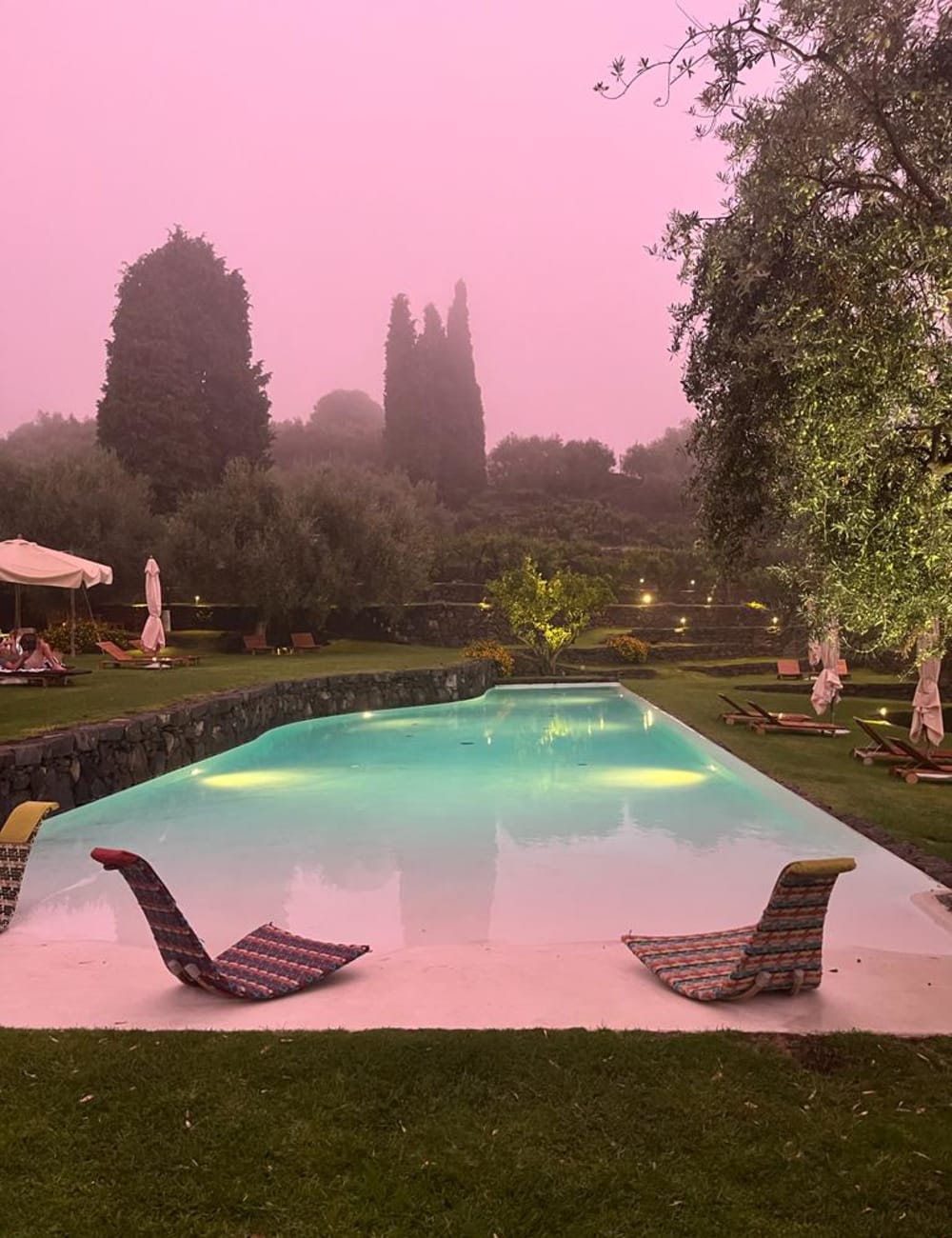
Privacy is a virtue, here, too, with villas dispersed around the vast estate, but the locus of Monaci is the grape-coloured main villa which houses a dreamy restaurant, Locanda Nerello, and a stunning bar where Italian Po-Mo meets ancient stone. On our last night, we rock up to the villa at dusk and witness a strange, low haze wash everything pink. A parting gift, perhaps, from Mother Etna, or a misty embrace from the gods.
Perfect for Destination dining, wine lovers and outdoorsy types alike.
Wine and dine There’s a second, more casual eatery, beside the pool, which takes the same 0km approach as Locanda Nerello and serves dishes determined by the daily harvest.
Worth getting out of bed for Feeling adventurous? Ask the hotel to arrange a hike cross Etna’s lava fields right up to her craters. For something a little more down to earth there’s cooking classes, yoga sessions, horseback tours, and even an on-site chicken coop where guests can collect their own eggs.
Want to continue your tour? Explore our complete collection of Sicily hotels
Mr & Mrs Smith’s associate editor Stephanie Gavan is a writer with a background in contemporary art. She has contributed to Art Review, Dazed, Italy Segreta, the Quietus, and more.



